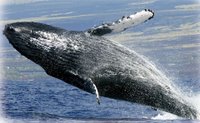Story from Kauai news
Borders Books and Music in Lihue will be hosting the launch of the suspense/thriller "Death Game," by Kauai novelist Cheryl Swanson on January 27. A second book-signing event is set for Hanapepe Art Night, on Friday, February 9 at Talk Story—The Bookstore.
Cheryl Swanson began writing full-time after giving up a six-figure income as a consultant and motivational speaker in medicine and dentistry. She was a clinical editor of Dentistry Today magazine, headquartered in New York, the author of three non-fiction books on medical technology, and spoke medical/dental schools and conventions in the United States and Canada.
The author of Death Game, which was published by Zumaya Publications, drew on her experiences with troubled teenagers as a child advocate to pen her first novel. As a child advocate in San Francisco, she worked extensively with children who experienced sexual and physical abuse in their homes and had been removed from that environment by local police.
According to J.C. Hall, the author of Legends of the Serai and a reviewer with Epinions, Death Game is a "stunning debut novel with all the hallmarks of a great thriller." According to Mystery Scene magazine consulting editor and Edgar nominee, Jeffrey Marks, "A taut novel of suspense, Death Game had me on the edge of my seat from the very first chapter." MidWest Review, December, 2006 said: "Talented author Cheryl Swanson maintains a quick pace that reaches a spine-tingling, heart-stopping climax."
"One con about Death Game is that after you’re reading it, you’ll be worrying about your teenager even when she/he’s at home," Swanson said. The book tells the story of a teenage boy who is obsessed with Internet gaming and ends up being the prime suspect in the shooting death of the heir to a shipbuilding dynasty in San Francisco.
The novel links the seemingly harmless teenage fixation of video and Internet gaming with the training of military operatives and more sinister consequences."Death Game is both timely and relevant, and a sharp reminder of the startling vulnerability of ordinary American citizens," J.C. Hall wrote. According to Book Review Club, "The horrifying implications in Death Game are not far from reality in the present world we live in."
Cheryl Swanson herself is fascinated by survivors, partly because Death Game was completed during chemotherapy. "I was diagnosed with breast cancer four years ago," she said. "Being a victim is a matter of luck—bad luck. Being a survivor, on the other hand, is a matter of character and faith. There is a lot of bad in the world—and boy, with all my research as a novelist, do I know it. And I think that gives everyone a fascination with heroes. How do they find the strength? What secrets have they learned? The world isn’t going to magically get better anytime soon, so we could all benefit from that strength."
She is not the only survivor in the family. She and her husband adopted a child from tough circumstances in Guatemala several years ago. "My husband Bob calls our daughter Carmen and myself, his two survivors. I gotta tell you, we know something in our family about making it through tough times."
Cheryl Swanson will be featured in a live interview by Tracey on KKCR, Kauai Community Radio on February 7th. She can be reached on her website at cherylswanson.net, where the first chapter of the Death Game can also be read.
Search This Blog
Thursday, January 25, 2007
Thursday, January 18, 2007
The Way Home
I became a novelist when I thought I was dying. I typed Death Game into my computer with eyes gritty and filmed from chemotherapy infusions; created scenes in the fog of four cancer and reconstruction surgeries. Scenes crept and chilled and chuckled in the marrow of my bones, as poisons fought the battle with cancer there—destroying damaged cells as well as those essential to my survival.
As things progressed, the reality of my disease set in and fear because a wall, high and hard and stone. I wrote Death Game to tear it down. Even the name was perfect; I was in a death game. Winner take all.
The first version was so bad that I wanted to throw it away, but it had cost me too much. Besides, the characters were part of my soul. The boy my heroine was trying to save was the child I wanted so badly. My heroine kept trying to find him, just as I kept trying to continue the adoption I had begun pre-cancer.
A new novel began to emerge when I started to recover. It was more hopeful—I allowed the bad guys to die. The good guys had another chance. My doctors told me I would have another chance. The cancer—for now, at least—was gone. There was always the chance it would come back, but the statistics weren’t that bad. I had a 90 percent chance of survival. I’m a risk-taker anyway. With those odds I would bet every dollar I have in Vegas.
And then entered, to the sound of trumpets—my adopted daughter from Guatemala. The exigencies of having to care for a child shocked me. Still in recovery, I shopped for formula bald, went to the park with her and couldn’t lift her into the swing.
Persist. My book was full of corpses, but I was alive. Groping onward, I left my home in San Francisco and moved with my child and husband to Hawaii. Not Honolulu, but off the map. As far as I could go, to the windward side of the northernmost Hawaiian island.
In an broken-down pole house hanging over a jungled ravine, my daughter was rock happy. She had a pet rooster and she loved the fact that she was never cold. But some nights I would sob with exasperation. I was a city girl, born and bred. My husband could not come with me—not for a long time, and were things in the jungle—feral pigs, rats, and centipedes.
The rats were the worst. They would climb up my mango trees, nibbling fruit on the way. Drop down on the roof and climb through the broken screens. When I ripped up the carpet, cockroaches scurried and the floors were black with ten kinds of mold I did nothing but try to make my house safe for the longest time. At nights the surf would keep me awake, and when I tried to surf, I broke my toe.
I got a beginner’s board, a soft top, and finally tottered upright. That moment I will not forget. In exile to my old life, I had ended up where I wanted to be. I was living in a place where the birds spoke in long, meaningful phrases, where clumps of tangled orchids hung from my trees.
I had proved what I had always suspected. As Paul Theroux said: "Even the crookedest journey is the way home."
As things progressed, the reality of my disease set in and fear because a wall, high and hard and stone. I wrote Death Game to tear it down. Even the name was perfect; I was in a death game. Winner take all.
The first version was so bad that I wanted to throw it away, but it had cost me too much. Besides, the characters were part of my soul. The boy my heroine was trying to save was the child I wanted so badly. My heroine kept trying to find him, just as I kept trying to continue the adoption I had begun pre-cancer.
A new novel began to emerge when I started to recover. It was more hopeful—I allowed the bad guys to die. The good guys had another chance. My doctors told me I would have another chance. The cancer—for now, at least—was gone. There was always the chance it would come back, but the statistics weren’t that bad. I had a 90 percent chance of survival. I’m a risk-taker anyway. With those odds I would bet every dollar I have in Vegas.
And then entered, to the sound of trumpets—my adopted daughter from Guatemala. The exigencies of having to care for a child shocked me. Still in recovery, I shopped for formula bald, went to the park with her and couldn’t lift her into the swing.
Persist. My book was full of corpses, but I was alive. Groping onward, I left my home in San Francisco and moved with my child and husband to Hawaii. Not Honolulu, but off the map. As far as I could go, to the windward side of the northernmost Hawaiian island.
In an broken-down pole house hanging over a jungled ravine, my daughter was rock happy. She had a pet rooster and she loved the fact that she was never cold. But some nights I would sob with exasperation. I was a city girl, born and bred. My husband could not come with me—not for a long time, and were things in the jungle—feral pigs, rats, and centipedes.
The rats were the worst. They would climb up my mango trees, nibbling fruit on the way. Drop down on the roof and climb through the broken screens. When I ripped up the carpet, cockroaches scurried and the floors were black with ten kinds of mold I did nothing but try to make my house safe for the longest time. At nights the surf would keep me awake, and when I tried to surf, I broke my toe.
I got a beginner’s board, a soft top, and finally tottered upright. That moment I will not forget. In exile to my old life, I had ended up where I wanted to be. I was living in a place where the birds spoke in long, meaningful phrases, where clumps of tangled orchids hung from my trees.
I had proved what I had always suspected. As Paul Theroux said: "Even the crookedest journey is the way home."
Tuesday, January 16, 2007
Tuesday, January 09, 2007
ISLAND WIDE LAUNCH OF DEATH GAME
Wednesday, January 03, 2007
View From the Edge of the World


My family and I now live in one of the most unusual areas in the world: the northernmost edge of Kauai. Those of you who live here or have visited know that it is truly an unforgettable place.
The ancient Hawaiians considered the windward side of Kauai to be the “edge of the world,” the place where souls of those who had died jumped off to the next world. There are multiple sites for sacred hula, many of which are still used.
Subscribe to:
Posts (Atom)



